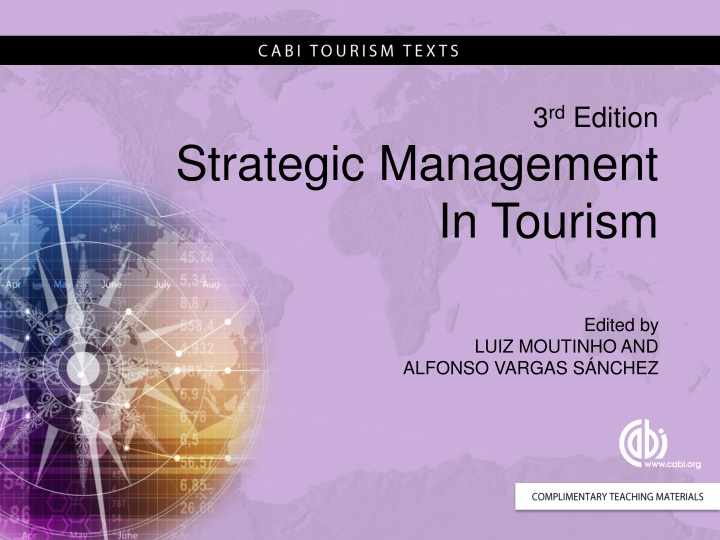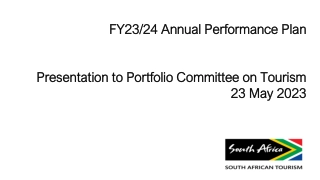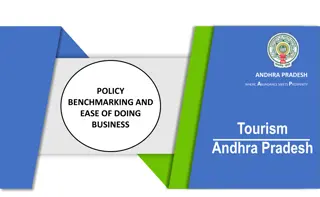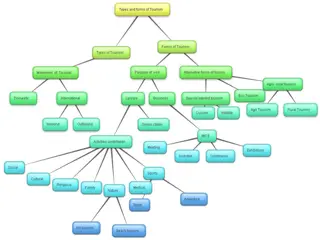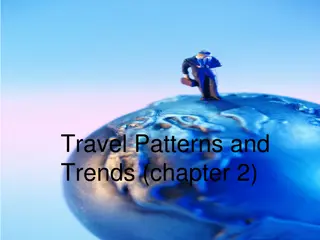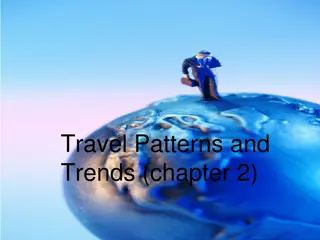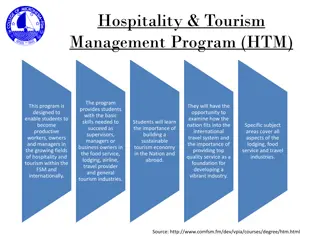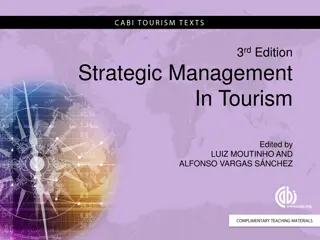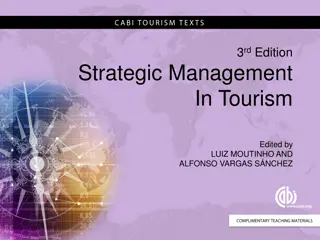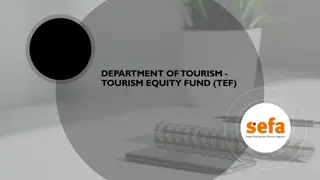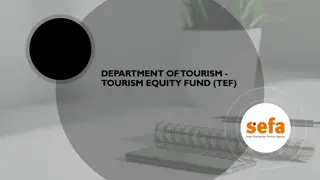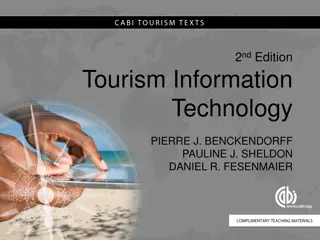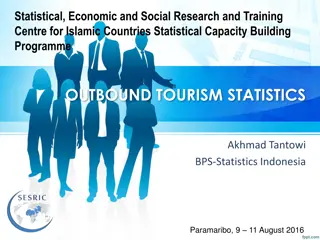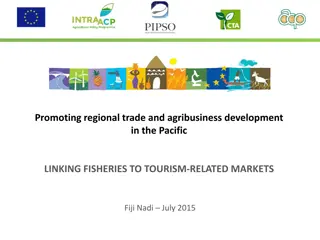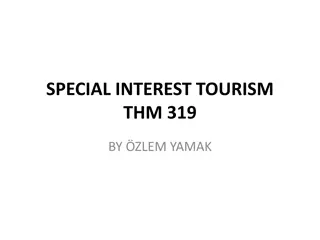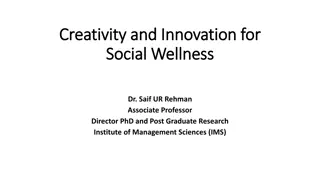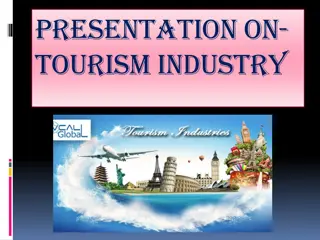Strategic Creativity in Tourism Business: Unleashing Innovation and Growth
Explore the dynamic landscape of strategic creativity in tourism business through the lens of the experience and attention economy. Discover how creativity-based approaches can reshape planning and generate novel opportunities in the tourism sector. Delve into the concepts of the experience economy, attention economy, entrepreneurship, innovation, and the essence of creativity. Uncover strategies to spark innovation, foster growth, and propel your organization towards entrepreneurial success.
Download Presentation

Please find below an Image/Link to download the presentation.
The content on the website is provided AS IS for your information and personal use only. It may not be sold, licensed, or shared on other websites without obtaining consent from the author.If you encounter any issues during the download, it is possible that the publisher has removed the file from their server.
You are allowed to download the files provided on this website for personal or commercial use, subject to the condition that they are used lawfully. All files are the property of their respective owners.
The content on the website is provided AS IS for your information and personal use only. It may not be sold, licensed, or shared on other websites without obtaining consent from the author.
E N D
Presentation Transcript
3rd Edition Strategic Management In Tourism Edited by LUIZ MOUTINHO AND ALFONSO VARGAS S NCHEZ
CHAPTER 6 STRATEGIC CREATIVITY IN TOURISM BUSINESS KANES K. RAJAH
LEARNING OBJECTIVES To explain the context for the chapter in terms of the experience economy and the attention economy. To discuss what creativity is all about and why creativity based approaches can be strategically a more effective way to plan ahead and offer new options to tourism. To provide ideas, approaches and techniques to assist those in tourism to solve problems and identify new opportunities for the sector.
1 The experience economy Economic change as going from the agrarian economy to the goods based industrial economy which led to the service industry and resulted in what we now have as the experience economy (Pine and Gilmore, 1998). Experience has value.
1 The attention economy ...in an information-rich world, the wealth of information means a dearth of something else: a scarcity of whatever it is that information consumes. What information consumes is rather obvious: it consumes the attention of its recipients. Hence a wealth of information creates a poverty of attention and a need to allocate that attention efficiently among the overabundance of information sources that might consume it (Simon 1971, pp. 40 41) Information that attracts attention has value.
Entrepreneurship, innovation and strategy 1 Strategy Ventures that seek growth, think strategically and use innovation are called entrepreneurial organizations (Wickham, 2006) Innovation Growth People who behave like this are called entrepreneurs Organizations that don t show these attributes remain micro-enterprises or as just small businesses
2 WHAT IS CREATIVITY? Gregory (1967) defined it as The production of an idea, concept, creation or discovery that is new, original, useful or satisfying to its creator or someone else in some period of time . However, it could be simply defined as coming up with a unique idea which is fit for purpose .
Kirtons Adaptors and Innovators Cognitive behaviour that influences your creative responses 2 1. Strong adaptors show a preference for detail, operate in an incremental way and take decisions in incremental steps. They are considered to be low in taking risk and therefore may spend more time reducing or guarding against risk during change. This makes them appear more reliable but the downside is they may take too long in arriving at decisions. 2. Strong innovators are more holistic and if there is sufficient detail to satisfy them may move on to take decisions. This could sometimes be too hasty as they may miss important points in the small print. However, they are able to connect disparate bits of information to come up with extraordinary new thought and take the big moves very daringly.
KAI scores on a 100 point continuum (Kirton, 1980) 2 I do it differently I do it better 32 160 96 Innovators Adaptors KAI Norm
Summary of Adaptor-Innovator Styles 2 ADAPTOR INNOVATOR Seeks solutions to problems in tried and tested ways Queries definitions of problems and their solutions Maintains accuracy and attention to detail over long periods of time Easily bored and quick to delegate routine tasks Rarely challenges the rules but is well able to use the space within them Has little respect for past customs Prefers to work within given structures and may find it difficult to break out Creates own structures but may have difficulty in getting others to accept them
3 The first three stages are about problem definition STRATEGIES FOR SOLVING PROBLEMS AND CREATING OPPORTUNITIES Objective Finding Fact Finding Otherwise you could end up solving the wrong problem! It is therefore very important to spend some time getting this right. (1) (2) The final stage is about Implementation Setting out the right strategies to ensure success is a fine art and a structured approach will help increase the chance for success. It is also about successful project management Problem Finding (3) The next two stages are about idea generation Solution Finding Idea Finding Acceptance Finding If you know what the problem is, finding the right ideas to solve it is always a challenge. It helps to use techniques that tap into different mental modes for ideas. (5) (4) (6) Fig. 6.1: CREATIVE PROBLEM SOLVING MODEL (CPS)
Divergence and Convergence To be able to use divergence and convergence in finding solutions to problems or the right opportunities to take forward, the prerequisites are: 1. Suspend judgement and 2. Avoid premature evaluation Divergence and convergence is necessary at each stage of the CPS process. Always start each stage with divergence, i.e. using different ways to thinking about a particular issue. Converge when all avenues for more information have been exhausted. During convergence select only what you judge will work
An instant checklist for problem solving Kipling s Serving Men Rudyard Kipling s poem (1902) goes: I keep six honest serving men (They taught me all I knew); Their names are What and Why and When And How and Where and Who. Whatever problem one is dealing with, these six questions are likely to provide a great deal of information. This is also relevant to other chapters in the book.
Two different approaches to Creative Problem Solving and Opportunity Finding Structured approach Random approach Tree diagram Step 1 Set out the main problem or issues. Step 2 Break down by pulling out 2 3 main sub issues that are highly important and make up much of what this problem/issue is about. Step 3 or more steps as necessary Pull down two or more relevant points that make up each sub-issue. Mind Maps by Tony Buzan Follow the rules for a mind map as shown in the book.
